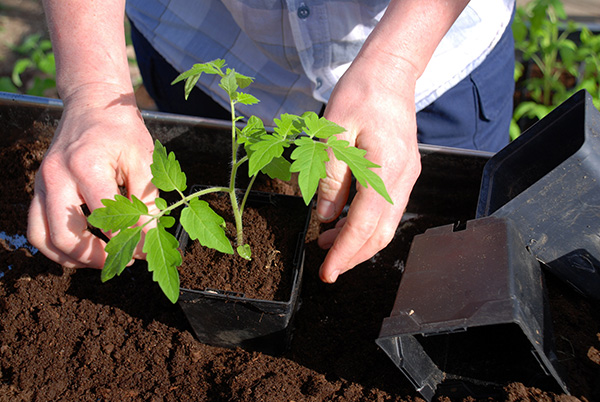Recognizing What Plants Don't Like Epsom Salt for Healthier Gardens
Recognizing What Plants Don't Like Epsom Salt for Healthier Gardens
Blog Article
Learn About the Certain Plants That Are Adversely Affected by Epsom Salt Application
Epsom salt, a prominent house remedy for different horticulture woes, is frequently commended for its beneficial impacts on plant development. Not all plants respond favorably to its application. Understanding the particular plants that can be detrimentally impacted by Epsom salt is critical for any gardener aiming to maximize their plant treatment routine. Roses, tomatoes, peppers, azaleas, and rhododendrons are just a few examples of plants that may not respond well to Epsom salt. The reasons behind these unfavorable effects and just how to alleviate them are essential knowledge for maintaining a flourishing yard.
Roses

Roses, especially sensitive to adjustments in their environment, can be adversely influenced by the application of Epsom salt. While Epsom salt is frequently used as a plant food to promote plant development and improve flowering, roses are just one of the plants that do not react well to its application. The high magnesium material in Epsom salt can interfere with the uptake of various other vital nutrients by the rose plants, resulting in shortages that materialize as yellowing leaves or stunted development.

Tomatoes
While Epsom salt is commonly promoted as a treatment for different plant concerns, including blossom end rot in tomatoes, its application can lead to detrimental outcomes if not made use of deliberately. Excessive Epsom salt, which is magnesium sulfate, can interfere with the fragile nutrient balance needed by tomatoes, potentially leading to shortages in various other important nutrients like calcium. When thinking about the use of Epsom salt on tomatoes, it is important to adhere to advised application prices and dirt screening to protect against unexpected repercussions on the overall wellness and productivity of these cherished garden plants.
Peppers
Peppers, revered for their numerous colors and levels of spiciness, can demonstrate vulnerability to negative influences from Epsom salt when not used with care and factor to consider for their specific nutritional demands. what plants don't like epsom salt. Peppers, belonging to the Solanaceae family, need a delicate balance of nutrients to grow. While Epsom salt is understood to boost magnesium degrees in plants, excessive application can interrupt this equilibrium, resulting in unfavorable effects on pepper plants
When peppers are subjected to high levels of magnesium from Epsom salt, it can disrupt the plant's ability to take in other important nutrients like calcium and potassium. This inequality may show up in symptoms such as leaf staining, stunted growth, and reduced fruit manufacturing. Additionally, the too much magnesium can alter the soil pH, additional aggravating nutrient uptake problems for peppers.

Rhododendrons
Given the sensitivity of particular plant types to inequalities triggered by Epsom salt, it is essential to take into consideration the influence on Rhododendrons, which also need certain nutrient degrees to thrive. Rhododendrons are acid-loving plants that favor acidic dirt conditions with a pH range between 4.5 and 6.0. Epsom salt, chemically referred to as magnesium sulfate, can change the dirt pH and interrupt the delicate balance of nutrients necessary for Rhododendron wellness.

To preserve the optimum development and health and wellness of Rhododendrons, it is essential to avoid the unplanned usage of Epsom salt and rather focus on giving the certain acidic soil conditions and resource nutrients that these plants need for growing.
Azaleas
These preferred flowering plants are usually found in parks, landscapes, view and gardens due to their appeal and versatility. While Epsom salt is commonly utilized as a solution for magnesium deficiency in plants, its application to azaleas can have negative effects.
Azaleas prefer slightly acidic soil conditions, and an excess of magnesium from Epsom salt can interrupt this balance, leading to nutrient imbalances and prospective toxicity issues. The incorrect application of Epsom salt can result in stunted growth, yellowing of fallen leaves, and overall decline in the health of azaleas.
Final Thought
Finally, it is vital to be familiar with the specific plants that can be detrimentally affected by the application of Epsom salt. Roses, tomatoes, azaleas, rhododendrons, and peppers are some examples of plants that might not gain from Epsom salt and might even suffer damage. It is crucial to research study and understand the requirements of each plant varieties prior to making use of Epsom salt as a plant food to guarantee their health and wellness.
Recognizing the particular plants that can be negatively influenced by Epsom salt is critical for any kind of garden enthusiast looking to optimize their plant treatment regimen. While Epsom salt is commonly used as a fertilizer to more tips here advertise plant development and enhance flowering, roses are one of the plants that do not respond well to its application.Extreme usage of Epsom salt can additionally result in a build-up of salts in the dirt, leading to root damage and dehydration of the rose plants. While Epsom salt is understood to enhance magnesium degrees in plants, excessive application can disrupt this equilibrium, leading to unfavorable effects on pepper plants.
The high salt web content in Epsom salt can also dehydrate Rhododendron roots, causing further tension and damages to the plant. (what plants don't like epsom salt)
Report this page